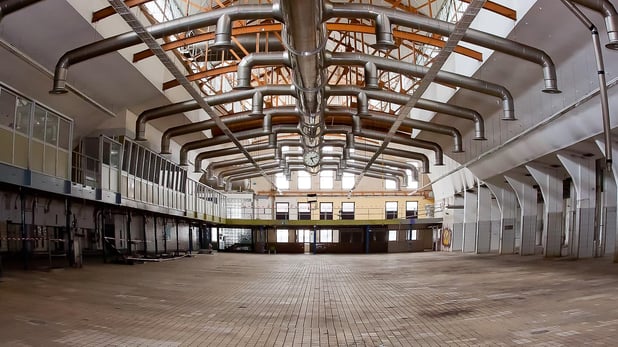4 Tiny Sensors That Reduce Energy Consumption in a Big Way

Energy costs will quickly sink a facility's budget when consumption is inefficient. For instance, over-ventilating may increase costs without substantially improving indoor air quality, especially if ventilation is set-and-forget throughout the building, regardless of occupancy levels or off-hours. The best way to reduce energy consumption and control costs is with a few tiny sensors that ensure your energy usage is responsive to your actual needs.
We recommend the following four sensors as simple solutions to energy management issues:
Indoor Air Quality (IAQ) Sensors
Air quality sensors measure metrics like indoor CO2 levels, humidity, temperature, or even the presence of harmful VOCs, or carbon monoxide. Their role in your energy consumption is to alert you (or trigger your HVAC equipment) whenever the indoor environment is substandard. The right insights will ensure you know when conditioning or ventilation are warranted — and when you can save the juice.
A simple solution like the all-in-one CW2 wall-mounted room sensor does it all at once. The modular design of the CW2 makes it easy to combine all IAQ monitoring capabilities into a single sensor platform. It’s small, easy to install, and can reduce energy consumption in a big way. Learn more about how IAQ sensors can slash your energy bill here.
Occupancy Sensors
A clear view of how and when your space is being used will drive efficiency in energy management. Wall or ceiling-mounted occupancy sensors can collect data on usage trends and also trigger systems for lighting, heat, air conditioning, ventilation, and more. When your building responds to actual people rather than blanket schedules, you’ll reduce energy consumption, reach optimum cost-efficiency, and maximize comfort.
Wall switch occupancy sensors are incredibly easy to deploy — they use existing wall switches, connect to existing wiring, and are compatible with both electronic and magnetic ballast loads.
Pressure Sensors
The airflow inside of an AHU (air handling unit) is a great indicator of zone pressure for regulating the inflow of outside air. Deploy pressure sensors inside of AHUs and ductwork for proof of flow and as control points for things like fan speed or demand control ventilation.
Solutions like the blue-tooth enabled PX3 pressure transducer can help you to reduce energy consumption because it’s less costly to cycle pre-conditioned inside air than to constantly ventilate and condition new air from outside.
Energy Consumption Meters
If you want to reduce energy consumption (and associated energy bills) in your facility, you first need to understand where and how your facility is consuming power and energy. A current monitoring system can provide an inside perspective on where energy is going, when, and how much. This data makes it possible to identify areas that consume too much energy and develop plans to streamline or mitigate energy consumption.
A one-stop solution power meter like the E50H2 is a great place to start. This energy consumption meter is a swiss army knife for wide-ranging applications from tracking power to gas, water, steam, or other energy forms. If you need to add sub-billing capabilities, a multi-circuit power meter can empower tenants with info about their energy use to help reduce energy consumption.
Talk to a Sensor Expert
These five tiny sensors can have an enormous impact on your ability to reduce energy consumption, but they’re just the beginning. Talk to a Veris sensor expert for personalized guidance on finding the sensors that will have the most impact for your building and unique situation. Just book a virtual meeting and connect from wherever you are!





